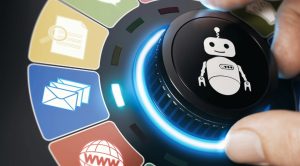Table of Contents
Using AI as a personal assistant has become incredibly popular in the past few years. Lots of people use AI and don’t even realise it: telling Alexa to start a bedtime routine for the kids, asking Siri for a local gyro restaurant that’s within walking distance and open at 2 a.m., or just breaking the ice on an email that you’ve been procrastinating on.
That said, voice commands and short text prompts barely scratch the surface of what your AI assistant is capable of. In this guide, we’ll look at how to squeeze the most value possible from your AI of choice, without giving away more data than you need.
You’ll get the information you need for essential safeguards, including how to freely explore online VPN service options to protect each session.
Top Strategies for Using AI as Personal Assistant to Boost Productivity
1. Streamlining Routine Tasks

Start off simple, with some of the chores that drain minutes from your day.
- Add smart features to your shopping with list apps. These apps learn your purchase patterns and remind you to restock critical supplies before running out.
- Implement email triage tools that scan your inboxes and sort items into “urgent” and “later” collections.
- Document scanners can even automatically tag incoming PDFs. So, when tax filing time comes, you’ll have everything categorised.
- Reminder bots use AI algorithms to monitor intervals for insurance renewals, subscriptions, and subscription trials. They also keep track of all the birthdays and anniversaries for your extended family.
All you need to do is give the AI platform, bot, or app access to the basic details it will need, or feed it the raw data, and it will handle the rest. It might take some initial configuring and periodic tweaks.
Still, in short order, you’ll spend less time on administrative time-sucks and more time on work that actually moves the needle.
2. Automating Schedule Management
Your AI calendar assistants can do more than just remind you that your Great-Aunt Bethany’s birthday is tomorrow, or find an empty slot to catch up with a friend over a cup of tea.
When you connect them to your work and personal diaries, your AI assistant can better schedule times for new commitments. This smart scheduling still respects your needs for lunch breaks, focus blocks, and anything else you need time for routinely.
The assistant suggests overlaps and can add travel time based on your commute route. You can give it hard-and-fast rules, like no calls before 9 a.m., no more than 4 meetings per day, and more.
These boundaries ensure you’re booking realistic agendas, not marathon endurance benchmarks. After a week or two, you’ll notice fewer last-minute clashes, smoother hand-offs between tasks, and that elusive hour of deep work carved out automatically.
3. Rapid Research and Quick Content Creation

If you need content but aren’t sure where to start, or if you have a large body of data to break down into manageable insights, fast AI is the way to do it.
AI is incredibly capable of drafting emails and tweaking tone to match the rest of your communications. It can help you generate more effective subject lines for your A/B testing or give you a list of key takeaways for a massive clinical study.
4. Maximising Personal Growth
Even though we tend to associate much of what AI can do with our work, it certainly isn’t limited to that. AI can help coach you on verbs in Spanish, create a kettlebell routine that works the muscle groups you want, or help you find strategies for getting better sleep.
Some language-learning apps, like Duolingo, even analyse pronunciation in real time, helping you pinpoint the syllables that need more polish.
Adaptive workout planners consider yesterday’s steps, today’s calendar, and your recovery score before serving a session. Habit trackers go further, spotting when afternoon slumps follow late-night scrolling and suggesting screen-time limits.
Locking Down Your Personal Information with a VPN

Since nearly all AI platforms are hosted in the cloud, all AI interactions travel the internet. This connectivity makes public Wi-Fi a very easy target for eavesdroppers and cybercriminals. In 2024, nearly 40% of adults surveyed had experienced data compromise due to using public Wi-Fi.
Activating a VPN before opening any assistant app creates an encrypted tunnel between your device and any service, platform, or app you may use. If someone attempts to intercept your internet traffic, they’ll find it useless as each packet is encrypted with industry-standard algorithms.
Make sure to choose a VPN provider with transparent funding, top-tier encryption, and a strict no-logs policy. Free VPNs offer basic protection for occasional AI use.
Paid options generally provide better encryption, faster speeds, more server locations, and guaranteed privacy, without the bandwidth limits or ads that often come with free alternatives.
Boosting Your Productivity Without Compromising Your Privacy
AI personal assistants can shave massive amounts of time off routine tasks, tighten up our schedules, and coach healthier habits, but only when they’re used wisely. Give them the right context; don’t give them all your secrets. Let them draft while you refine.
Protect every AI session with a reliable VPN, and store all strong passwords in a secure password manager, not a chat window or notepad file.
With the right safeguards in place, you’ll be ready to enjoy the benefits of smarter personal tools without giving up any privacy or control.


